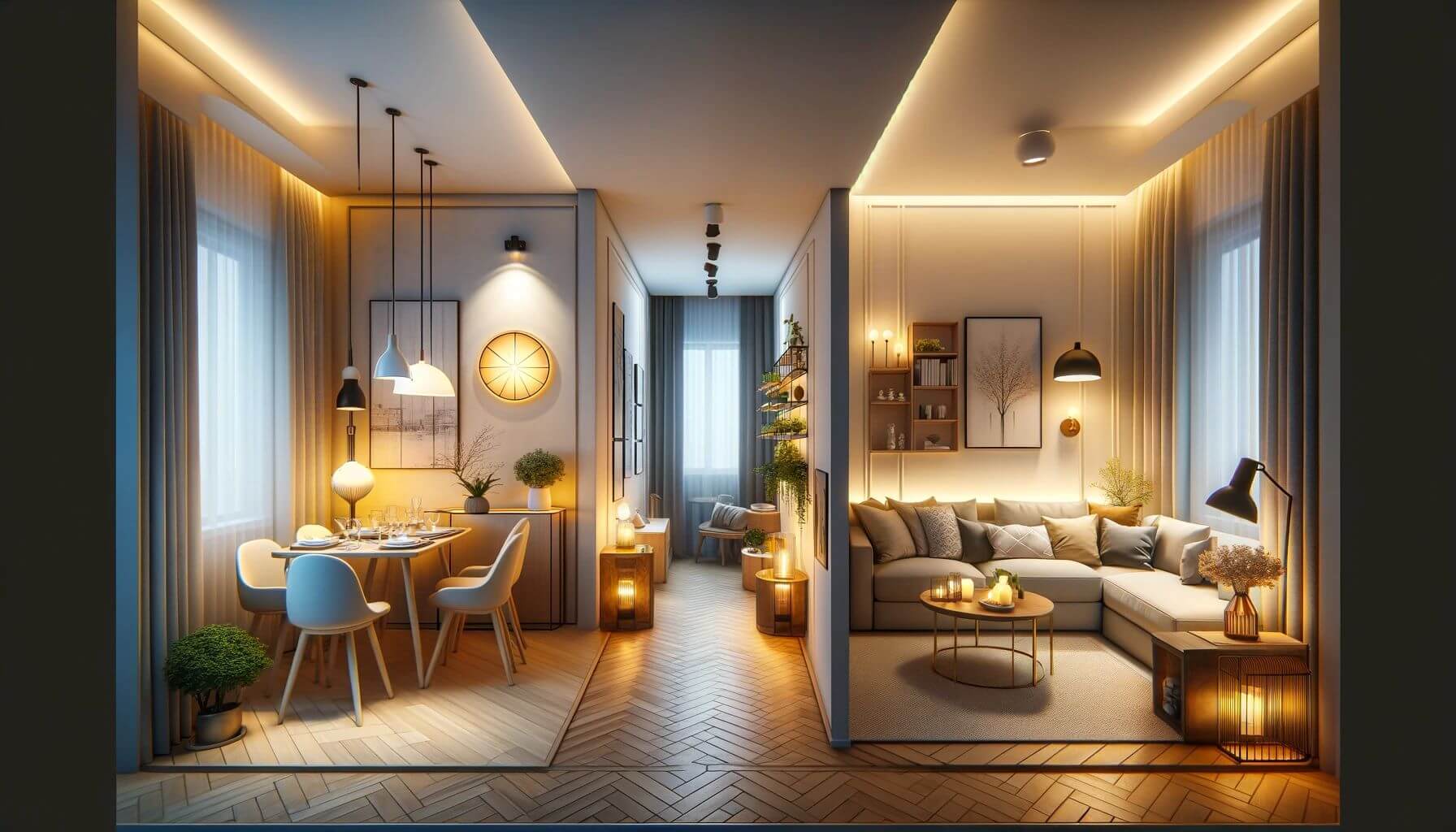
In today’s urban living landscape, small spaces have become increasingly common, challenging homeowners and renters to create functional and stylish living areas within limited square footage. One of the most crucial areas to tackle is the living room-dining room combo, where two essential functions must coexist harmoniously. Designing a small living-dining space can be a daunting task, but with the right strategies and creative ideas, you can transform even the most compact area into a beautiful and practical haven.
Let’s explore 9 Clever Hacks to Create a Seamless and Stylish Small Living-Dining Space.
How to set up a living room and dining room combo?
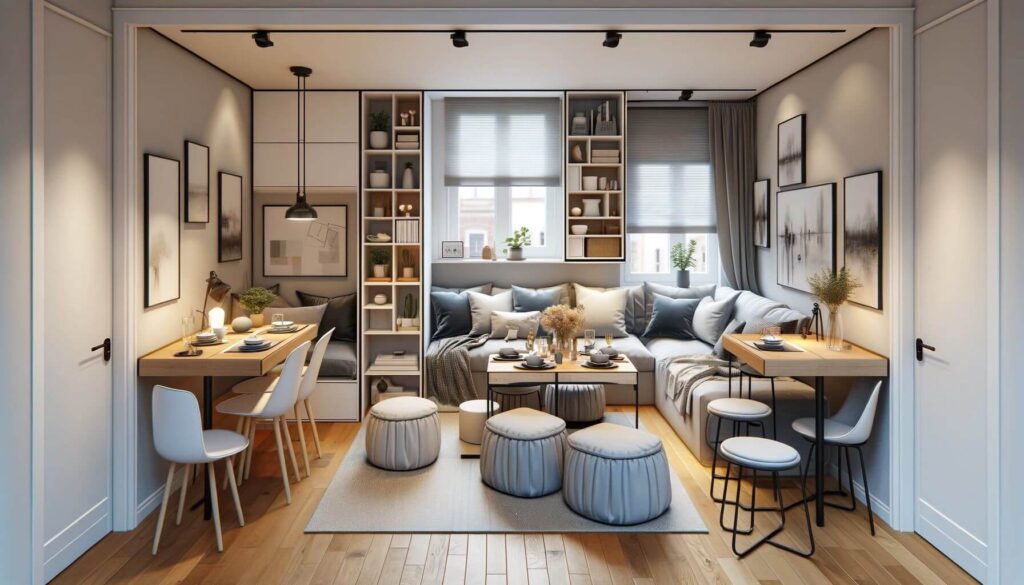
When setting up a living room and dining room combo, it’s essential to define distinct zones for each function while maintaining a cohesive design. Use area rugs to visually separate the living and dining spaces, and choose furniture placement that creates a natural flow between the two zones. Position your sofa to face the dining area, creating an inviting conversation space that bridges the two rooms.
Lighting is another key element in setting up a successful living-dining combo. Use a mix of ambient, task, and accent lighting to create a warm and inviting atmosphere. Pendant lights or a chandelier over the dining table can help define the dining area, while table lamps or wall sconces in the living area can provide a cozy ambiance. Choose lighting fixtures that complement each other across both zones to tie the spaces together.
How to arrange a small living room with kitchen?
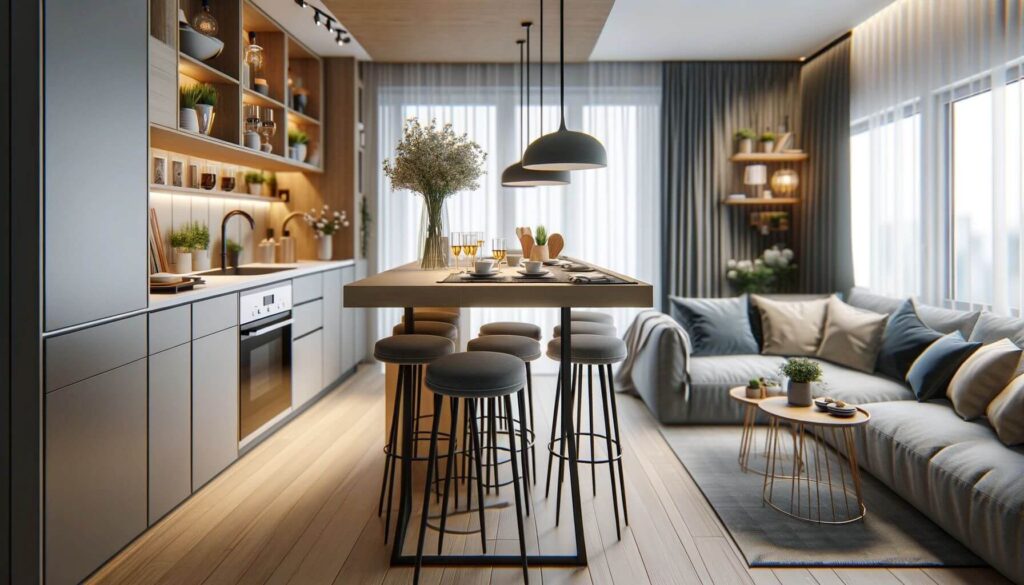
When arranging a small living room with a kitchen, create a functional and visually appealing layout that maximizes the available space. Use an open floor plan, where the living room and kitchen flow together seamlessly. Define the different areas using a kitchen island or a breakfast bar as a natural divider, which also provides additional seating and storage options.
Create a focal point that draws the eye away from the kitchen, such as a statement piece of furniture or an eye-catching artwork. Use furniture with multiple functions, like a dining table that doubles as a workspace or a storage ottoman that serves as extra seating. Opt for a cohesive color scheme that unites the living room and kitchen, and keep the decor simple and uncluttered to avoid overwhelming the small space.
Where should a dining room table be placed in a small living room?

When placing a dining room table in a small living room, consider the flow of traffic and the overall balance of the space. Position the dining table against a wall to maximize floor space and create a sense of order, leaving enough room around the table for comfortable seating and easy movement. This works particularly well with rectangular or oval-shaped tables.
Alternatively, place the dining table in the center of the living room to create a focal point and a natural gathering spot. This arrangement works best with round or square tables, as they allow for more flexible seating and easier circulation. Ensure sufficient space between the table and the surrounding furniture to avoid a cluttered feeling.
How to divide a small living room and dining room?

To divide a small living room and dining room, create visual separation while maintaining an open and airy feel. Use furniture placement to define distinct areas, such as placing a sofa with its back to the dining area or using a low bookshelf as a room divider. This allows light to flow through the space while creating a sense of separation.
Another way to divide the space is by using different flooring materials or area rugs to distinguish between the living and dining areas. For example, use a plush carpet in the living room and a sleek hardwood floor in the dining area. Hang curtains or install sliding doors to create a temporary division when needed, allowing for flexibility and privacy.
What shape of table is good for small spaces?
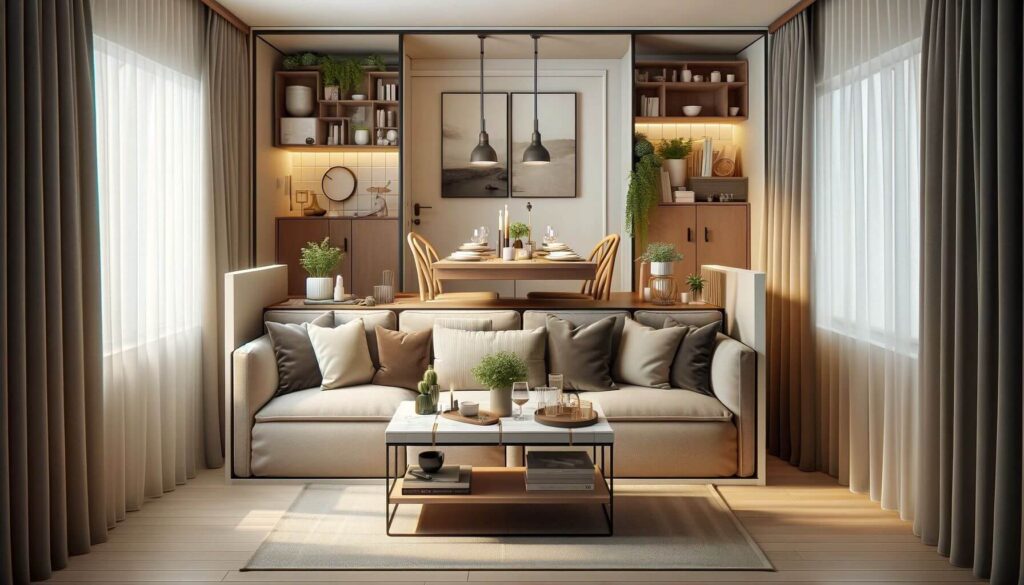
When choosing a table for a small space, opt for shapes that maximize seating while minimizing the footprint. Round tables are an excellent choice, as they allow for more flexible seating arrangements and promote conversation. They also soften the edges of a room, creating a more inviting atmosphere.
Square tables are another great option for small spaces, as they provide a balanced and symmetrical look. They can be easily pushed against a wall when not in use, freeing up valuable floor space. Oval and rectangular tables with slim profiles can also work well in narrow or elongated living-dining combos, as they offer ample seating without overwhelming the area.
How do you fit the most seating in a small living room?

To maximize seating in a small living room, choose furniture pieces that serve multiple purposes and can be easily moved around. Opt for a sectional sofa that can be reconfigured to suit different needs, or select a sofa with built-in storage to keep the space clutter-free. Incorporate ottomans or poufs that can double as extra seating when needed, and consider using folding chairs or stools that can be tucked away when not in use.
Another way to fit more seating in a small living room is by utilizing the vertical space. Install floating shelves or a tall bookcase to draw the eye upward, making the room feel larger. Use wall-mounted seating, such as fold-down chairs or benches, to provide additional seating without taking up valuable floor space.
What is the best seating for a small living room?

The best seating for a small living room is versatile, space-saving, and comfortable. A loveseat or a compact sofa is a great foundation piece, providing ample seating without overwhelming the space. Pair it with accent chairs or armchairs that can be easily moved around to accommodate different seating arrangements.
Consider incorporating multifunctional seating options, such as a storage ottoman or a window seat with built-in drawers. These pieces offer both seating and storage, helping to keep the living room organized and clutter-free. Avoid oversized or bulky furniture pieces that can make the space feel cramped and crowded.
Which type of sofa is best for a small living room?
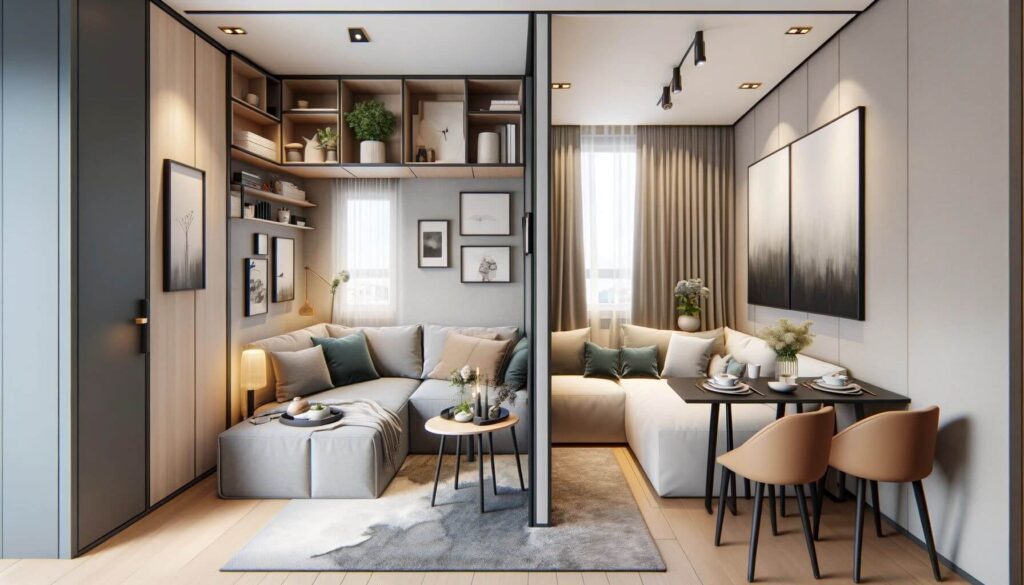
When selecting a sofa for a small living room, choose designs with clean lines, low profiles, and slim arms to maximize seating space without visually overwhelming the room. A loveseat or a compact two-seater sofa is an excellent choice, as it provides comfortable seating without taking up too much floor space.
Consider a sofa with exposed legs, as this allows light to flow underneath, creating a sense of openness. Opt for sofas with light-colored or neutral upholstery to make the space feel brighter and more expansive. If you need additional seating, consider a sectional sofa with a chaise lounge or a sleeper sofa that can accommodate overnight guests.
Where to put a TV in a small living room with a fireplace?
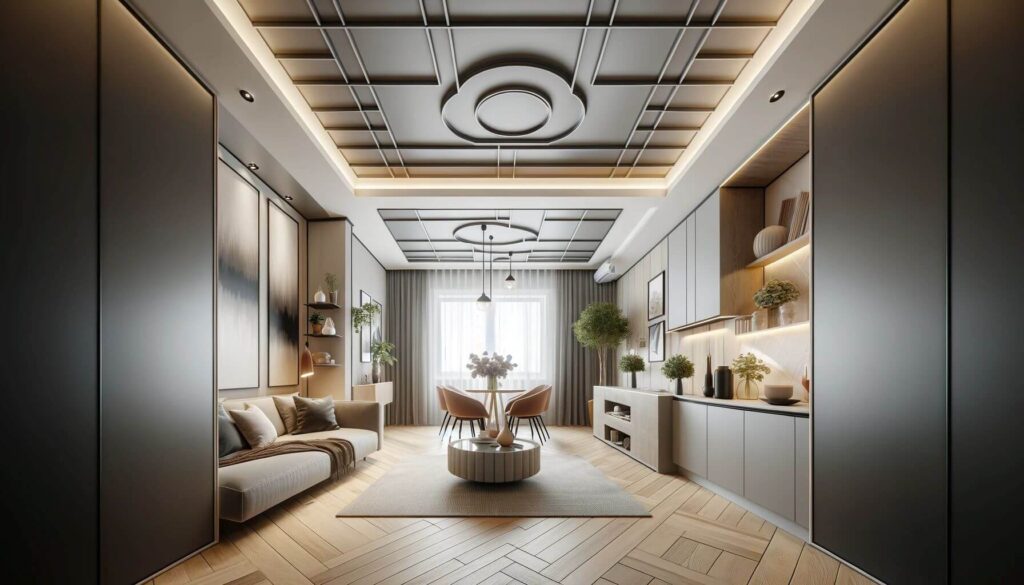
When placing a TV in a small living room with a fireplace, consider the room’s layout and the fireplace’s location. One option is to mount the TV above the fireplace, creating a central focal point. This works well if the fireplace is not too high and the viewing angle is comfortable from the seating area.
If mounting the TV above the fireplace is not practical, consider placing it on a media console or a low-profile stand adjacent to the fireplace. This allows both elements to share the spotlight without competing for attention. Alternatively, place the TV on a swivel mount or a retractable arm, allowing you to adjust the viewing angle and hide the screen when not in use.



